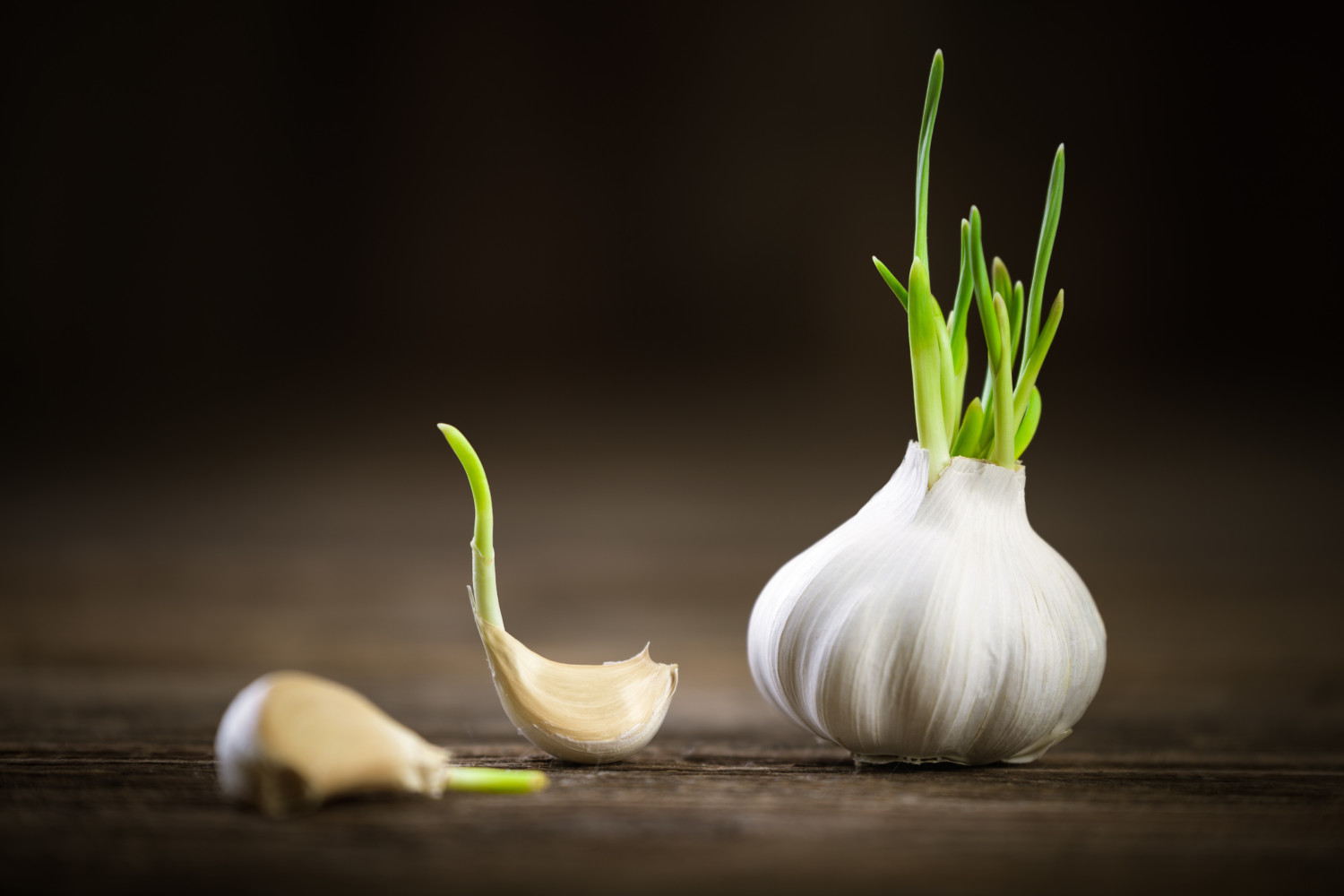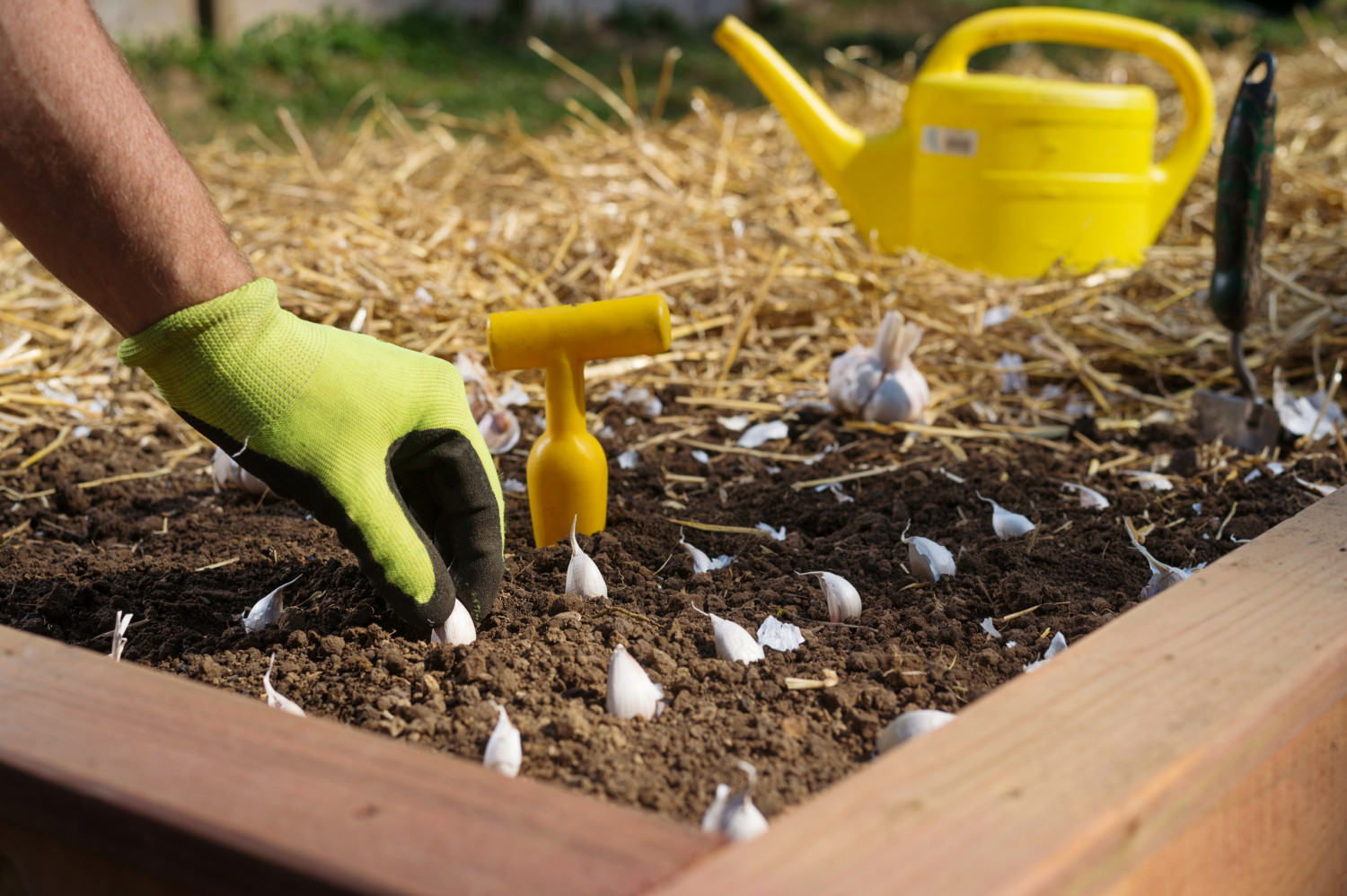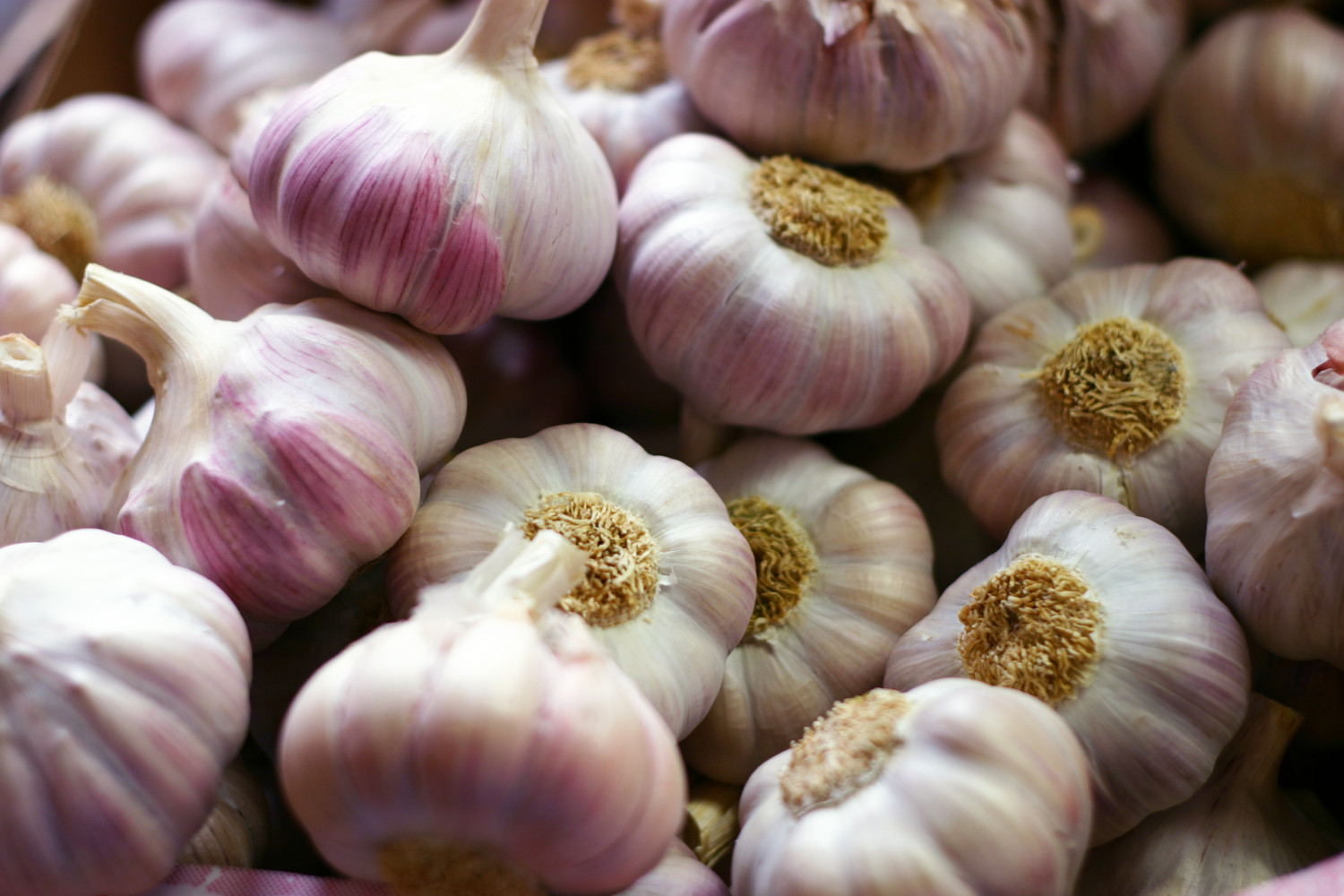Not only is garlic a tasty addition to countless savory dishes, but it also offers numerous health benefits. Did you know that garlic can boost your immune system, lower your blood pressure, improve cholesterol and even help you live longer? Fresh, unpeeled, whole heads of garlic can last nearly six months, so you don’t need to worry about wasting it because it goes bad before you can use it.
If you love gardening or have been thinking of starting your own little plot, garlic is one of the easiest crops to grow. Learn how to grow garlic yourself and have a bountiful supply ready to incorporate into cooking and baking. Or, share with family and friends.
How To Start Growing Garlic From Seed Cloves
There are three factors to consider before you can plant garlic: when, where and what kind. When depends on where you live. For most people in the United States, the best time to plant is in the fall, between September and November, typically about 10 to 14 days before the ground freezes. Like other bulbs, garlic develops roots during the fall and winter and then produces foliage in the spring. However, harvest is not until summertime. If you live in the South or Southwest, you can plant anytime from the fall through early spring, although the later you plant, the smaller the cloves will likely be.
Next, choose where to plant the garlic, select a spot that receives 6 to 8 hours of sunlight per day with loose, fertile, weed-free soil. You can prepare the ground by weeding and mixing in compost. If you plan to use raised beds, which can provide excellent drainage, make sure they are 2 to 3 feet wide and at least 10 inches tall.
When considering how to grow garlic, you might be tempted to plant sprouted bulbs from the supermarket. However, experts advise against doing so as commercially-grown bulbs are typically treated with a sprout inhibitor that prevents them from growing. In the future, you can use your own garlic seeds for replanting but start with cloves from a local nursery or seed company.

How To Choose Varieties And Plant Your Garlic
Choose a garlic variety that is best suited for your region. Hardneck garlic varieties have a sharp, complex flavor, grow an edible flower stem (a scape) and are hardy, making them ideal for enduring cold winters. Purple stripe and rocambole are the most resilient of these.
Softneck garlic is what you generally find in the produce department. Softneck garlic produces several cloves per bulb and does well in temperate regions. These types, which include Corsican reds, silver roses and California whites, also mature faster and store better.
Once you have figured out the particulars, you can begin planting. Each clove is a seed that will grow into a whole bulb. Break up the heads into individual cloves, leaving the papery covers intact. Plant each clove four inches deep with the pointy tip up and spaced about five inches apart. Cover the cloves gently with soil and top with about six inches of straw to protect the plants during the winter.

Caring For, Harvesting And Storing Garlic
After the threat of frost has passed in spring, remove the straw. As shoots emerge, cut off any flowers because they may decrease bulb size if you leave them. You can add a nitrogen-heavy fertilizer in early spring and again in early May when the bulbs begin to swell. Keep your garlic plants well-weeded and water every three to five days from mid-May through June, tapering off in mid-June.
You can harvest the garlic from late June to August. Look for yellowing foliage and harvest when the tops of the bulbs begin to fall over. Lift a bulb to make sure the crop is ready. If it is plump with thick, papery skin, you can carefully dig up the bulbs using a garden fork. Brush off any soil but leave foliage and roots intact and then allow them to cure in a dry, shady, well-ventilated spot for at least two weeks.
When the wrappers and roots are dry, the root crown is hard and you can break the cloves apart easily, the bulbs are cured. Trim off roots or leaves, discard tops and remove only the dirtiest wrappers. Store the bulbs in a dark, cool, dry place. Save some of your best-formed large bulbs for replanting again in the fall.

Now that you know how to grow garlic, will you do it? It’s prime planting time!
This story originally appeared on Simplemost. Checkout Simplemost for additional stories.


